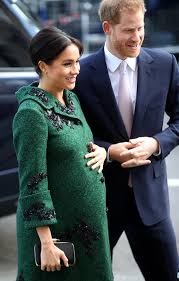Effectiveness of Acupuncture for Pain Control After Cesarean Delivery: A Randomized Clinical Trial
Kristen Sparrow • August 29, 2023

Is adding preoperative acupuncture to standard pharmacological therapy effective for pain control in patients after cesarean delivery?

This study interests me for a couple of reasons.
- Post op pain is common. It is also very common to receive opiates after surgeries. Anything to decrease pain post op is to be investigated.
- Usichenko is a researcher I follow because he did some seminal work on the importance of the vagus nerve on pain relief. In this study, they used auricular embedded needles, in addition to body acupuncture.
- I am getting increasingly interested in trying embedded needles not only in the ear, (which I do now), but also in the body. Apparently, he has done this to good effect. There were studies by Fishie using embedded needles here, and here.
Usichenko TI, Henkel BJ, Klausenitz C, Hesse T, Pierdant G, Cummings M, Hahnenkamp K. Effectiveness of Acupuncture for Pain Control After Cesarean Delivery: A Randomized Clinical Trial. JAMA Netw Open. 2022 Feb 1;5(2):e220517. doi: 10.1001/jamanetworkopen.2022.0517. Erratum in: JAMA Netw Open. 2022 Apr 1;5(4):e229622. PMID: 35226080; PMCID: PMC8886541.
This randomized clinical trial examines the safety and efficacy of acupuncture as a supplemental preoperative treatment for pain in women who will undergo cesarean birth.
Key Points
Question
Is adding preoperative acupuncture to standard pharmacological therapy effective for pain control in patients after cesarean delivery?
Findings
In this randomized clinical trial with 180 female patients, acupuncture reduced pain on movement and accelerated patient mobilization after cesarean delivery compared with placebo acupuncture and standard pharmacological therapy alone.
Meaning
Findings from this trial suggest that use of preoperative acupuncture as an additional pain therapy is safe and effective in patients after elective cesarean birth.
Abstract
Importance
A pharmacological approach to pain control after cesarean delivery is often insufficient on its own. Acupuncture is a promising method for mitigating postoperative pain and reducing postoperative opioid requirements.
Objective
To evaluate the efficacy and effectiveness of acupuncture as an adjunctive therapy for pain control after cesarean delivery, compared with a placebo intervention and standard care alone.
Design, Setting, and Participants
This single-center, placebo-controlled, patient- and assessor-blinded randomized clinical trial was conducted from January 13, 2015, to June 27, 2018, at a tertiary university hospital in Greifswald, Germany. Participants were women who were scheduled for elective cesarean delivery under spinal anesthesia and were randomized to either the acupuncture group (n = 60) or placebo group (n = 60). Another 60 consecutive patients who met the eligibility criteria and received the standard postoperative analgesia were selected to form a nonrandomized standard care group. The intention-to-treat analysis was performed from August 19, 2019, to September 13, 2019.
Interventions
In addition to standard pain treatment, each patient in the acupuncture group received auricular and body acupuncture with indwelling intradermal needles, whereas patients in the placebo group were treated with nonpenetrating placebo needles.
Main Outcomes and Measures
The primary outcome was pain intensity on movement, which was measured using an 11-item verbal rating scale. Secondary outcomes were analgesia-related adverse effects, analgesics consumption, time to mobilization and Foley catheter removal, quality of patient blinding to randomization, and patient satisfaction with treatment of pain.
Results
A total of 180 female patients (mean [SD] age, 31 [5] years) were included in the intention-to-treat analysis. The mean pain intensity on movement in the acupuncture group on the first postoperative day was lower than in the placebo group (4.7 [1.8] vs 6.0 [2.0] points; Cohen d, 0.73; 95% CI, 0.31-1.01; P = .001) and the standard care group (6.3 [1.3] points; Cohen d, 1.01; 95% CI, 0.63-1.40; P < .001). On the first postoperative day, 59 patients (98%) in the acupuncture group were fully mobilized vs 49 patients (83%) in the placebo group (relative risk [RR], 1.18; 95% CI, 1.06-1.33; P = .01) and 35 patients (58%) in the standard care group (RR, 1.69; 95% CI, 1.36-2.09; P < .001). The Foley catheter was removed in a total of 57 patients (93%) from the acupuncture group vs 43 patients (72%) from the placebo group (RR, 1.33; 95% CI, 1.12-1.57; P = .003) and 42 patients (70%) from the standard care group (RR, 1.37; 95% CI, 1.14-1.62; P = .002). Other parameters were comparable across the 3 study groups.
Conclusions and Relevance
Results of this trial showed that acupuncture was safe and effective in reducing pain and accelerating mobilization of patients after cesarean delivery. With consideration for personnel and time expenditures, acupuncture can be recommended as routine, supplemental therapy for pain control in patients after elective cesarean delivery.
I wanted to underscore this from the article
We believe that we could enhance the effect of peripheral stimulation of sensory afferents by the stimulation of cranial nerves, especially the auricular branch of the vagus nerve, which is currently considered the mechanism behind the analgesic effect of auricular acupuncture.34 This theory is in agreement with the experimental data of Komisaruk and Sansone,35 who demonstrated that the upper part of the vagina and the lower part of the uterus receive afferent vagal innervation and suggested the neurophysiological basis for a novel pain-blocking mechanism.36 This idea is supported to some degree by the findings of the present trial, in which hemodynamically relevant bradycardia occurred in patients from the acupuncture, placebo, and standard care groups during cesarean delivery. This adverse event required treatment using an antagonist of muscarinic acetylcholine receptors (atropine) to counteract the hypothetical stimulation of parasympathetic nerves from needling in the territory of the auricular branch of the vagus nerve. Beyond this clinically relevant finding, the use of indwelling acupuncture needles, which remained in situ for 3 days after cesarean delivery, was not associated with any adverse effects in this RCT. The safety of using indwelling intradermal needles has been thoroughly discussed in previous studies.17

